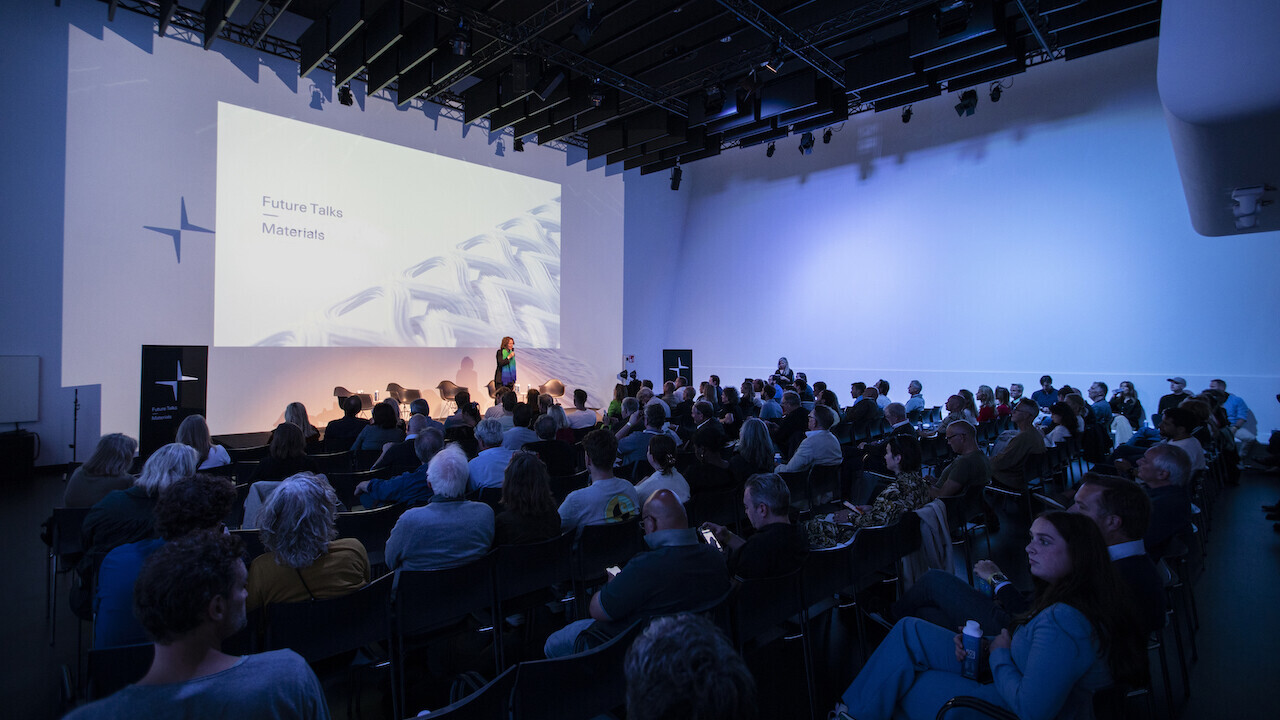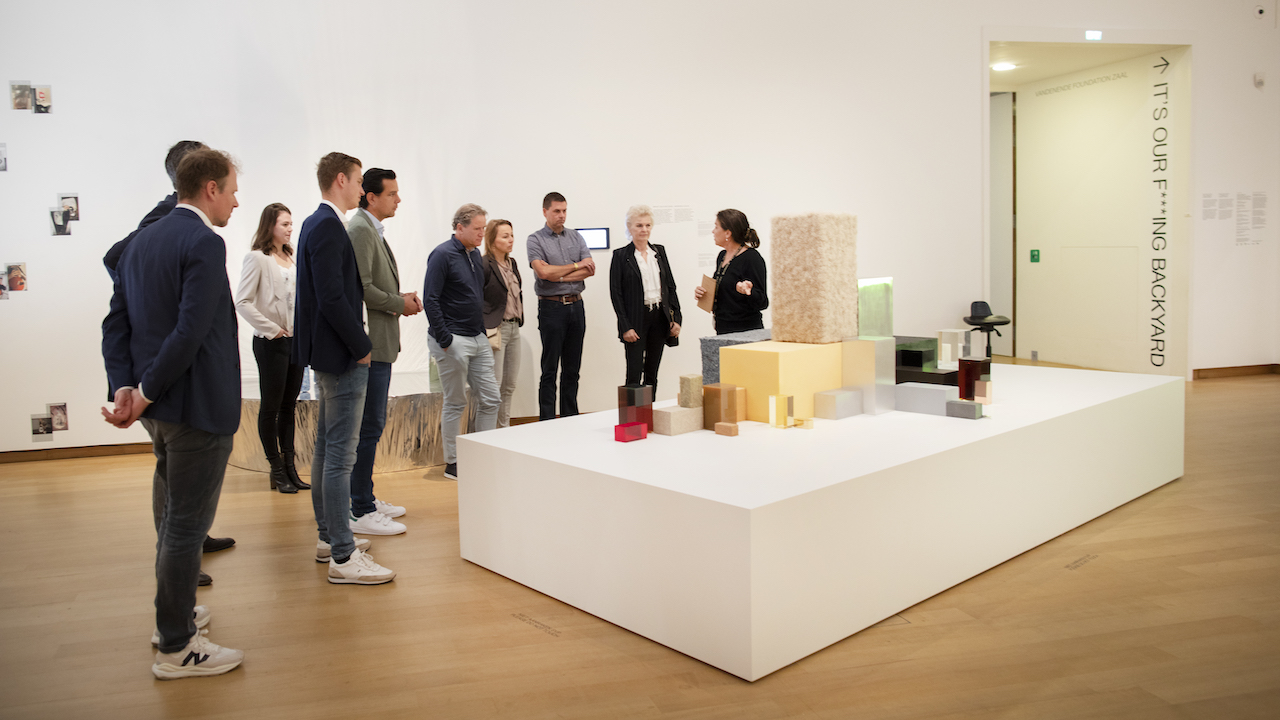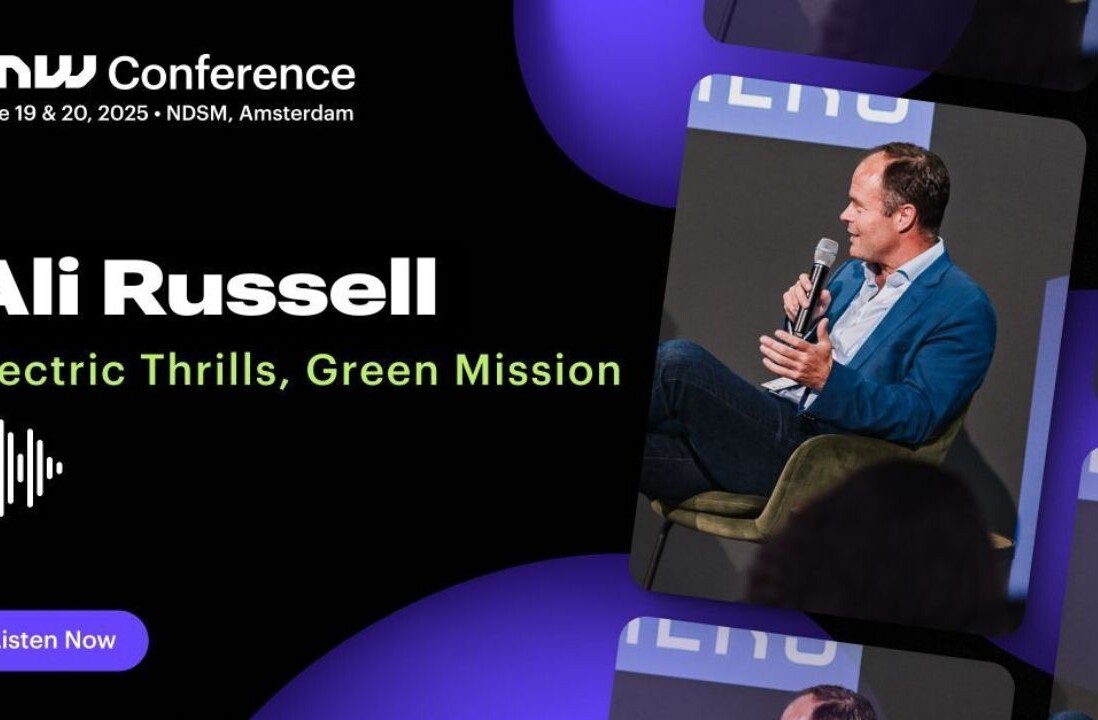
Fighting climate change. That’s about solar panels, ditching meat, flying less, and driving an electric car, right? Absolutely, but that’s only half the story.
For a lot of product designers, sustainability is becoming the key focus of their creative process. They’re on a mission to find new ways to replace some of the most common (and most carbon intensive) materials and components with new, green alternatives. And that’s good news for the planet, because radical breakthroughs in zero-waste, bio-based, and energy neutral — or positive — products are needed more and more.
The good news: breakthroughs are already being made everyday! Last week, I visited the first ‘Future Talks’ meeting, organized by electric car manufacturer Polestar with their long-term partner Stedelijk Museum Amsterdam. ‘Future Talks’ is a series of meetings in which a wide range of experts, along with the public, debate about the biggest challenges facing the future of sustainability.

Future Talks: Sustainable Materials
This first meeting was all about product design and alternative materials. In a panel discussion, hosted by former Dutch Channel 1 news anchor Sacha de Boer, architects, artists, professors, entrepreneurs, and consultants debated the question of how we can restore our connection with nature and the role of sustainable design and eco-positive materials in this process.
As designer Hakim El Amrani from Studio NousNous puts it:
If ‘nature’ is not around us, then we lose connection and no longer value nature as a ‘must’ anymore.
El Amrani’s work is all about ‘Biophilic design’, a concept used within the construction industry to increase connectivity to the natural environment. He uses it both when designing individual buildings, as well as on the city-scale.
The most obvious example of this is having plants in your home. But, more often, ‘nature’ is also found in custom-designed furniture based on eco-friendly materials. It’s argued that this approach has all kinds of health, environmental, and economic benefits for residents.
“Interaction with nature is key,” says El Amrani.
Knowing who we are as human beings, knowing what our position is related to our surroundings, it all starts with knowledge, love and respect for nature. On top of that, we believe that with Biophilic design, we can encourage more sustainable behaviors amongst our customers in the long run.
Other sessions included a talk on how we can leverage raw materials in sustainable design and how we can move towards completely carbon neutral design.
While most of the speakers were working in the design industry, one speaker, Bart Nollen, working for impact assessment tool dayrize, brought up the importance of data in the process. Without data and continuous measurement, we won’t be able to both see progress on sustainability and hold businesses accountable for it.
While design and data aren’t usually associated with each other, a key feature of the future of sustainable design will likely be the inclusion of data.

Our F***ing Backyard
The collaboration with ‘Stedelijk Museum Amsterdam’ is obvious. Accompanied with Future Talks, the museum is currently hosting an exposition about sustainable design and materials called It’s Our F***cking Backyard. Designing Material Futures.
The exhibition showcases impressive ideas and solutions for producing materials with less impact, or better yet, producing them with an eco-positive footprint. Take, for example, the work of artist Eric Klarenbeek, who makes glass out of micro-algae. The algae take CO2 out of the water (and the water adsorbs it from the air). With this CO2, the algae can create a ‘plate armor’ of glass. Klarenbeek harvests the algae, dries it, and turns it into strong, solid glass.
“When grown and used on a large scale, we can truly take a big step in ‘climate positive’ construction,” Klarenbeek says.
The entire exhibition is full of products made out of recycled waste or new nature-based products. Ceramic waste in furniture, textiles made out of pine needles, tableware made of cow’s blood (!), but also the reintroduction of an ancient painting technique for dyeing clothing.
What all the products, ideas, and manufacturing processes have in common is that they challenge the way we build and produce materials today. Their aim is to show us how out-of-the box thinking can help us develop desperately needed alternatives for today’s consumption driven and non-sustainable society.
2030 is the year
And Polestar? What does this new kid on the EV block have to do with this? Well, maybe everything.
Polestar is aiming to build a climate neutral car by 2030 with a carbon footprint of 0 throughout its lifetime. This is a major task as we realize that electrification is perhaps the easiest part of the process. At the start of the so-called ‘Polestar 0 project’ Fredrika Klarén, head of Polestar’s sustainability division, explained:
We are an electric car manufacturer, so consequently we don’t have to worry about emission spewing combustion engines. But that doesn’t mean the job is done. The real challenge is to ban all the emissions within the whole production process, from the materials we use up to circular batteries and everything in between.
Simply compensating the CO2 emissions by planting trees is not enough for Polestar. Experts warn that planting trees for CO2 compensation, in the long run, isn’t that sustainable after all. Forests can be chopped or burned down, which blows the stored carbon back into the atmosphere, neutralizing the positive impact it once made.
“How are we going to do it?” asked managing director of Polestar Netherlands, Willem Baudewijns, on stage at Future Talks.
Lots of questions aren’t answered yet, lots of problems still need to be solved. Producing and recycling a battery comes with an average of 9 tons of CO2 equivalent. To be honest, we don’t know yet how to lower this number, but by setting the bar high, we force ourselves to ultimately design towards zero.
Designing towards positive impact
At that moment somebody from the audience took the floor… “Designing towards a positive impact, that’s the goal you should chase,” she said.
Fighting climate change, unchaining a revolution, it all starts with a positive narrative. Designing towards zero displays a message of stagnation, whereas the narrative can and should be: we must change things for the better. It may sound marginal, but in my opinion it makes a big difference.
I understood the point the speaker wanted to make, but somehow I feared that such an approach was a bit too far out of the comfort zone of the other participants. To my surprise, all of the speakers on stage fully agreed with this alternative narrative. Big changes still start with a good story, I thought. And designing towards a positive impact may be the subject for future talks on sustainability.
Get the TNW newsletter
Get the most important tech news in your inbox each week.






